What are Kokeshi dolls?
Simply said, Kokeshi are Japanese dolls with no arms or legs which were originally designed as toys for children. These uniquely made dolls have been crafted for hundreds of years and are still seen as beauties today.
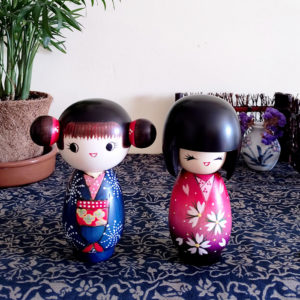
History of Kokeshi;
This folklore art started during the Edo period (Beginning of the 19th century) and were made by kijishi, Woodworkers in the northern parts of Japan. It is said that this gorgeous craft had started with the ideas of increasing work for the woodworkers and to have a higher business rate. Kokeshi dolls are eye-catching, they are different from normal dolls and therefore it attracted little children which caused both of these ideas to succeed.
This is how ‘Traditional Kokeshi dolls‘ started.
Traditional Kokeshi dolls
There are 10 styles of Traditional Kokeshi dolls according to the area. The craftsmen use the techniques which were handed over from their masters, and they keep the same design since the origin.
Naruko kokeshi is one of them and it makes a squeaky noise when you turn the head (photo left).
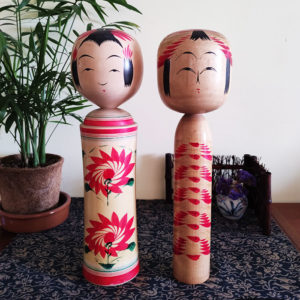
The name ‘Kokeshi’
One might ask why Kokeshi dolls are called Kokeshi. One of the theories is that the ‘ko’ from Kokeshi is coming from the kanji ‘small’ (小) and that ‘keshi’ is coming from the word ‘‘芥子坊主‘ (keshi-bouzu) which is a type of hairstyle of Edo period. The keshi-bouzu hairstyle is often painted on traditional kokeshi dolls and Kokeshi dolls could often be described as small, thus they make up the name kokeshi.
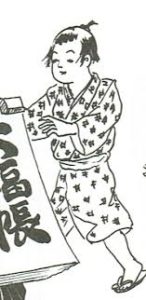
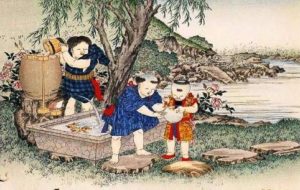
Kokeshi dolls in the making;
Kokeshi dolls all start with a piece of thick wood. This wood is chosen from a specific tree called ‘ミズキ Midzuki (Dogwood)’ or cherry trees, and the logs that are cut from the tree are dehydrated for around a year for a better surface to paint on.
Firstly, the wood is carefully carved into a sphere or the shape of the body and into the doll’s head in the wood lathes. These two pieces are then put together. To finish off, the doll is polished and carefully painted with details.
Watch how a Japanese craftsman makes Naruko Kokeshi (the photo above). It is so therapeutic to watch it and you will admire the painting skill for sure!
Modern Creative Kokeshi dolls
“近代創作こけし Modern Creative Kokeshi” is modeled by the author’s individual free ideas and is produced using original techniques. The trend was riding since 1947 after World War II.
Since 1954, the Japanese government set up an award system and contests were held. ‘Prime minister award’ was rewarded to the best work. Since then, creative activities have become more active and the work of famous artists have been evaluated as unique arts and crafts.
Kokeshi dolls in this day;
Kokeshi dolls are now popular with people all over the world! These lovely dolls are mostly used as decorative ornaments and are sometimes seen as lucky charms. They look beautiful as they sit on a shelf ready to be admired, so there are many who collect them. These dolls range from adults getting married to children in kimonos, from cute ones to classic and sophisticated ones.
I think it is a work of art of finding a good balance. The eyes, nose and mouth are drawn with short lines, the artists find the perfect position for them and create such lovely facial expressions. Their Kimonos are also pretty. They have limited space to put some designs but they still find a perfect balance on the Kimono too.
Kokeshi dolls in our web-shop
Our Kokeshi dolls are all authentic dolls made by award winning Japanese artists.
One must be careful of imitations which are made in factories from plastic, making them cheap.
Make sure to check out our Kokeshi doll collection and bring Japan to your own home!
Thank you for reading today and here is a 10% discount code which can be used once per user.
Coupon code: kokeshilove10
If you would like to gift one to your friend or family, we can also do a gift wrapping with a Furoshiki Japanese wrapping cloth.
Check how we do it from our YouTube videos
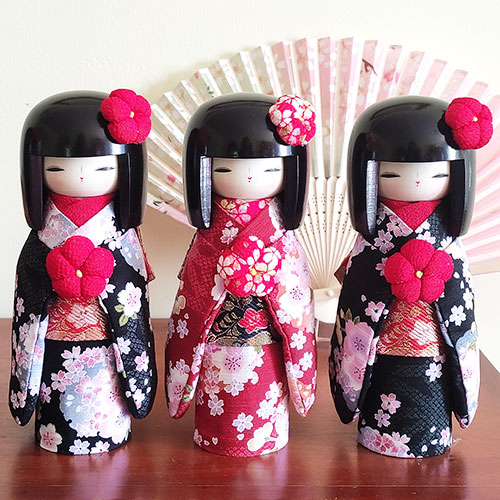
One comment on “All About Kokeshi Dolls”
Comments are closed.
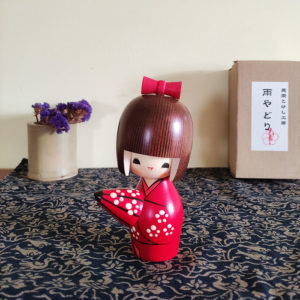
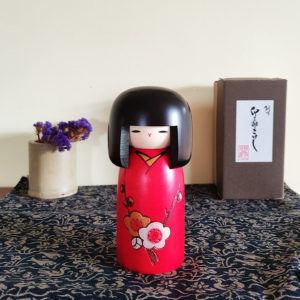
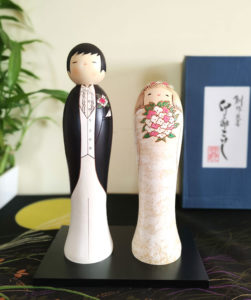
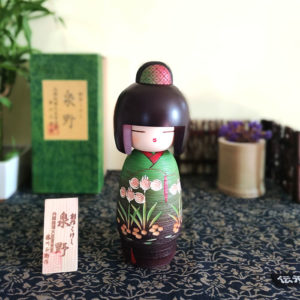
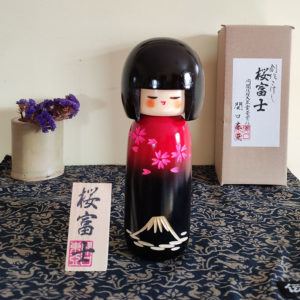
Why are the Kokeshi dolls created without arms and legs? What is the history?